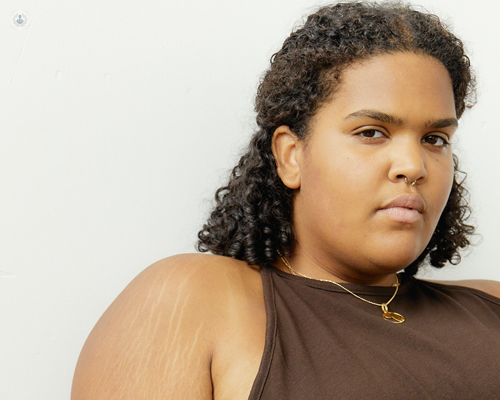What you should know about robotic gynaecological surgery
Written by:Fibroid or uterine myoma removal using robotic-assisted laparoscopy is a welcome innovation for those who require a myomectomy. It avoids the risks that traditional surgery has for this procedure, such as bruising, prolonged recovery and wound problems.
Here to provide his expert take on robotic-assisted myomectomy is highly-experienced consultant gynaecologist, Mr Simon Butler-Manuel. He answers frequently-asked questions, considering the aim of the procedure, if it has any disadvantages, and how robotic-assisted technology has developed over recent years.

What is the aim of a robotic-assisted myomectomy?
Robotic myomectomy is a procedure using keyhole surgery to very precisely remove a fibroid or myoma from the uterus, leaving the uterus intact. That, of course, maintains one's fertility potential so that you can have a pregnancy in the future.
When is this type of surgery necessary?
Robotic-assisted myomectomy is suitable for anyone who has a symptomatic fibroid, or fibroids. This is mainly done for women who have not yet have had children, or who are intending to have children, but there's a significant number of women who just don't want to have a hysterectomy and want to preserve their uterus (or womb).
What advantages does the use of robotic technology in this procedure?
The use of robot-assisted laparoscopy to perform a myectomy has really revolutionised the recovery from this operation. Traditional surgery tends to be very painful and associated with a prolonged recovery, sometimes lasting weeks or even months, with considerable bruising and risk of haematoma and other wound problems. Robotic surgery almost completely avoids this risk and it really has revolutionised the procedure, and the recovery from it.
Are there any disadvantages?
There are actually very few disadvantages to having robotic surgery and a robotic myomectomy. If one has a symptomatic fibroid then there are probably potential benefits to be had.
There's always a risk of haemorrhage with any surgery and that includes myomectomy. Haemorrhage is the principle risk of this sort of surgery, and of course, there are risks with any surgery at all. Many women have had operations in the past and this, perhaps, multiplies the risks.
How long does the procedure take? Is it painful?
It depends very much on the size and position of the fibroid or fibroids that need to be removed. If they're on the surface of the uterus, which are called subserosal fibroids, the surgery to cut the fibroid from the rest of the womb can be very quick.
If it's more embedded, deep within the wall of the womb, particularly on the posterior surface of the womb, that surgery to dissect the fibroid away from the rest of the womb can take some time. Actually, what often takes longest, particularly with the large fibroids, is to then divide up the fibroid into small pieces in a controlled manner and safely remove that through the small incisions. So that one really gains benefit of the keyhole operation. That's done in a very controlled manner, removing the specimen within a thick-walled polythene bag through the small incision somewhere along the tummy.
How has the use of robotic-assisted techniques in gynaecological surgery developed in recent years?
I've been performing laparoscopic myomectomy for many years, often for quite big fibroids. The use of robot-assisted surgery has helped even further to allow many more women the potential benefits of keyhole surgery. Robotic surgery is particularly good for women of all shapes and sizes, and increasingly, it helps gain access to the pelvis. Sometimes, fibroids can be removed from some extremely difficult positions around the womb and around the cervix.
The manipulation of the wristed-instruments that are available on the Da Vinci robot really do facilitate the dissection, and enable even more people to benefit. There are definite benefits that are over and above standard laparoscopic surgery.
Arrange a consultation with renowned consultant gynaecologist, Mr Butler-Manuel, to address your fibroid or myoma removal requirements, via his Top Doctors profile.


